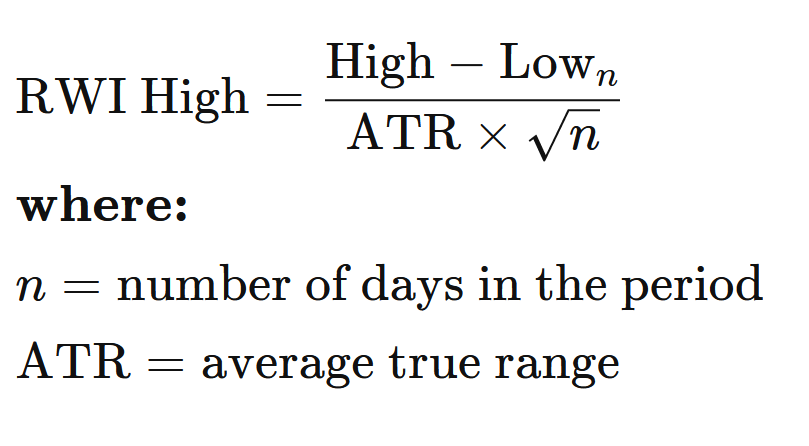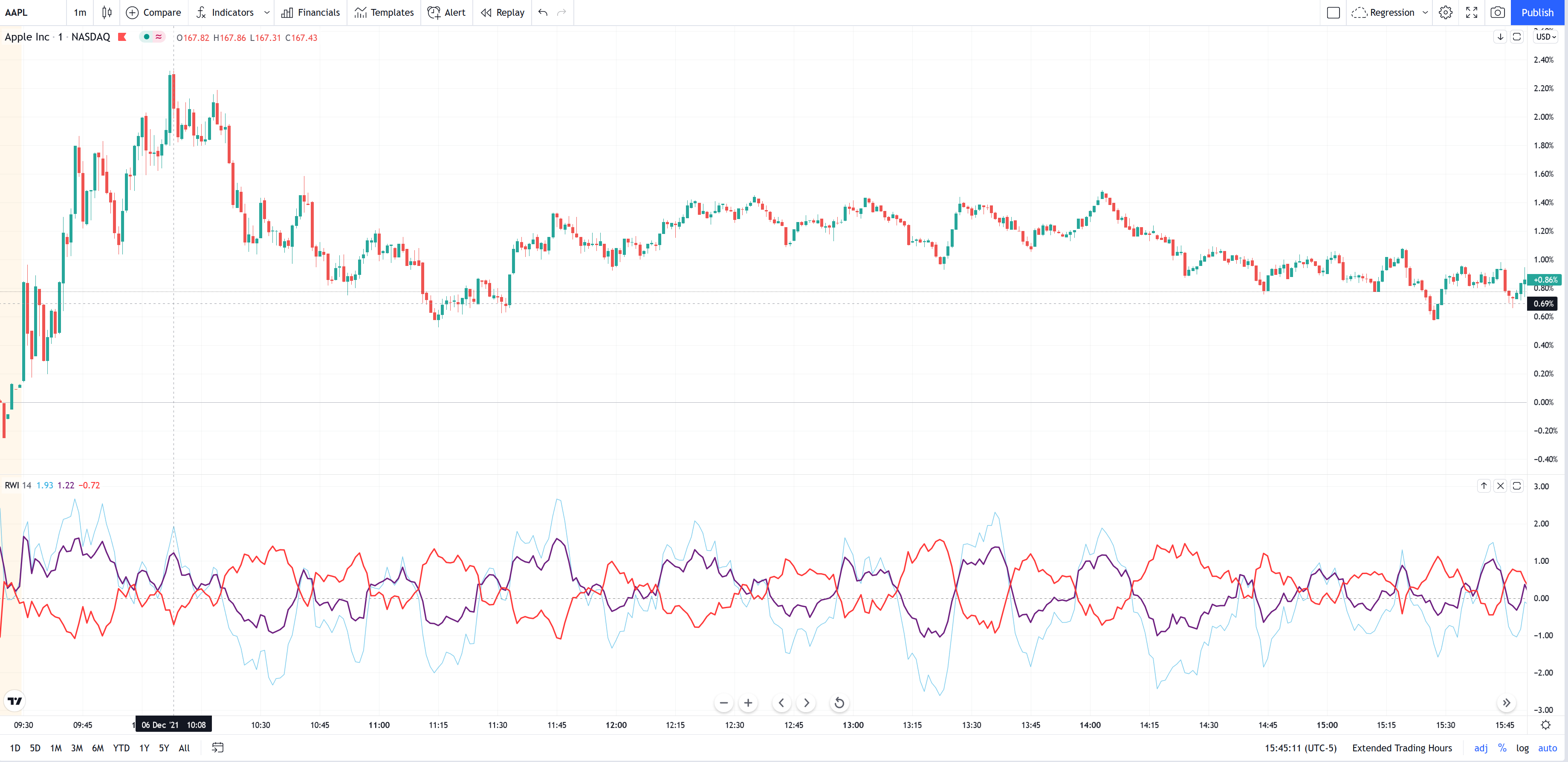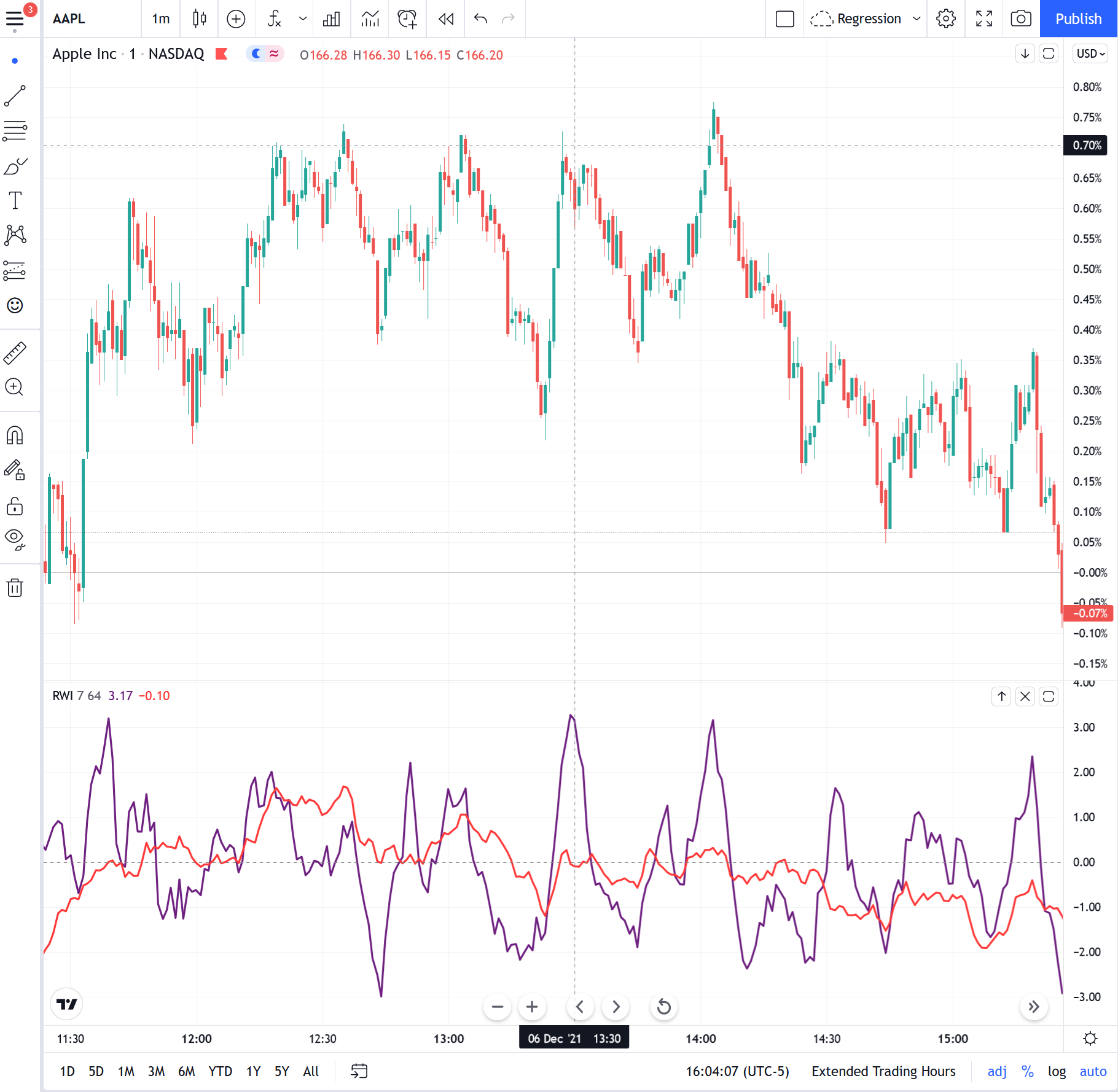140 Random Walk Index
RWI compares a security’s price movements to random movements in an effort to determine if it’s in a statistically significant trend.
The bounds of randomness, also known as displacement distances, could be calculated by taking the square foot of the number of binary events, which refer to two-sided outcomes with equal probability (like a coin toss). Logically speaking, any movement outside of these bounds suggests the movement is not inherently random in nature. The RWI applies these mathematical principles when measuring an uptrend and downtrend to determine if it’s random or statistically meaningful.
The index delivers two ouputs for the high and low trading prices.

Figure 14.3: Random Walk Index High
the Low index is similar:

Figure 14.4: Random Walk Index Low

Figure 14.5: Random Walk Index
Oftentimes, traders and market timers will enter long positions when a long-term RWI High is greater than 1.0 and the short-term RWI Low is also above 1.0. This means the trader tracks two RWI calculations, a longer-term one, say 64-periods, and a short-term one, say seven-periods.

Figure 14.6: Random Walk Index at two lengths